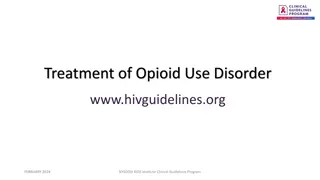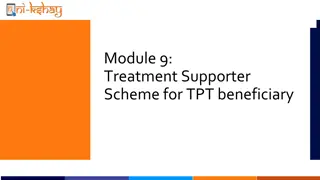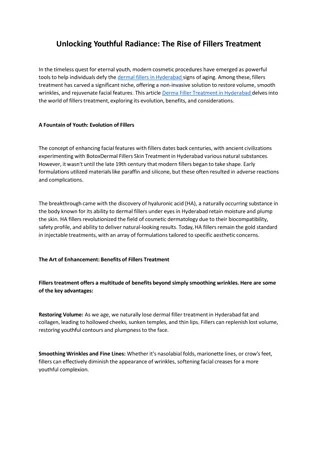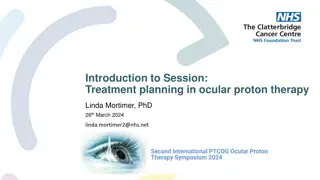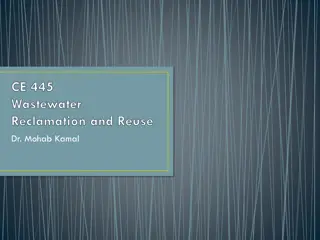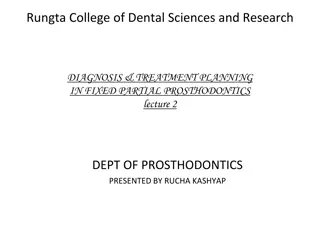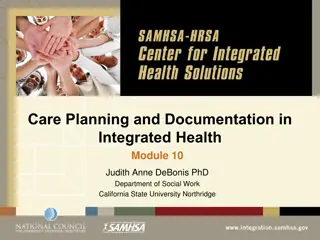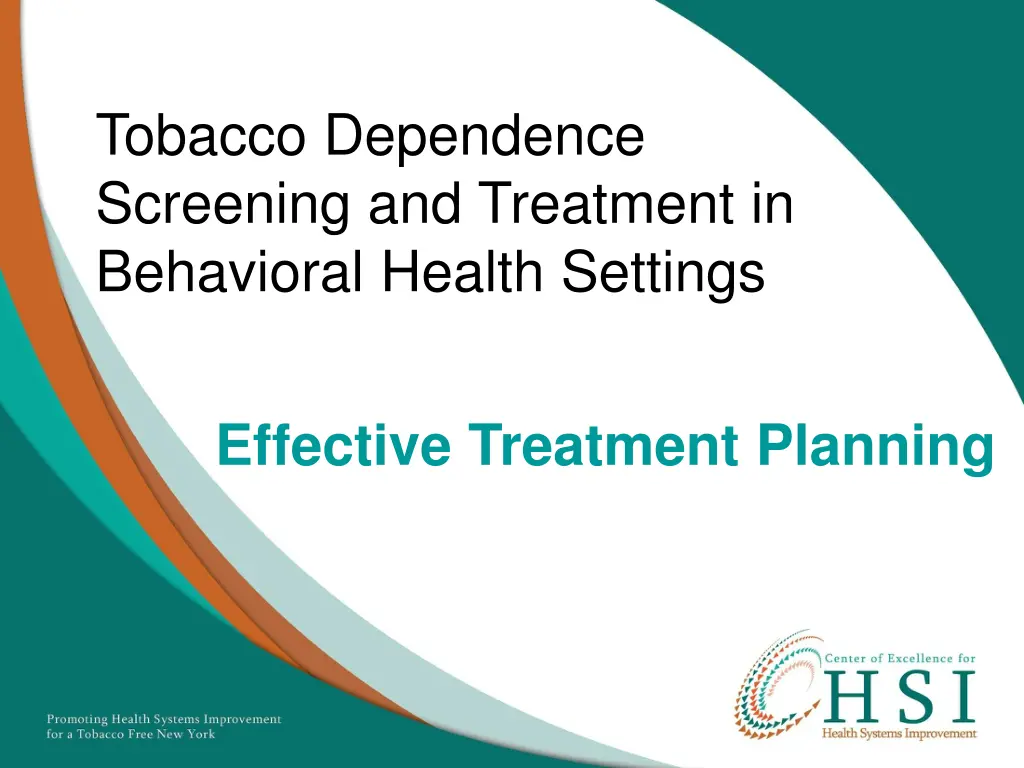
Tobacco Dependence Treatment Planning in Behavioral Health Settings
Learn about effective treatment planning for tobacco dependence in behavioral health settings, including identifying treatment interventions, creating treatment plans, and addressing tobacco use. Participants will gain the skills to develop comprehensive treatment plans that cater to the individual needs of clients struggling with tobacco use.
Uploaded on | 0 Views
Download Presentation

Please find below an Image/Link to download the presentation.
The content on the website is provided AS IS for your information and personal use only. It may not be sold, licensed, or shared on other websites without obtaining consent from the author. If you encounter any issues during the download, it is possible that the publisher has removed the file from their server.
You are allowed to download the files provided on this website for personal or commercial use, subject to the condition that they are used lawfully. All files are the property of their respective owners.
The content on the website is provided AS IS for your information and personal use only. It may not be sold, licensed, or shared on other websites without obtaining consent from the author.
E N D
Presentation Transcript
Tobacco Dependence Screening and Treatment in Behavioral Health Settings Effective Treatment Planning
OBJECTIVES As a result of this training, participants will be able to: Identify various elements of a treatment plan and how they apply to the treatment of tobacco use Identify treatment interventions that can be utilized in the treatment of tobacco use Complete treatment plans that effectively address tobacco use 2
AGENDA Welcome, Introductions, Goal and Objectives Elements of a treatment plan Tobacco use treatment interventions Creating effective treatment plans for tobacco use Closing 3
WELCOME & INTRODUCTIONS Please share your: Name Agency Role 4
Basis of the Treatment Plan Based on findings in the assessment Only areas identified as problematic are addressed Takes into account the strengths, abilities, and preferences of the client. Treat for as long as it takes Developed in collaboration with the client. 6
When to Address Tobacco Use When a client is a current tobacco user? When the client has never used tobacco? When the client has a history of tobacco use and last used six months ago? When the client has a history but hasn t used in two years? When a client states that they don t want to stop using tobacco? 7
Purpose of the Treatment Plan Helps organize client treatment and therefore make it more effective Helps to justify the provision of services to payors Allows client to be active participant in determining what and how things will be addressed during treatment 8
Elements of a Treatment Plan Problem Statement-Defines rationale for addressing specific area Long-Term Goal-Represents a resolution of the problem Short-Term Goal-Specific, measurable steps client will take to reach problem resolution Interventions-Services counselor will provide to support short-term goal acquisition 9
Stages of Change and Treatment Planning Pre-contemplation Contemplation Preparation Action Maintenance How does the stage of change a client is in impact the treatment planning process? 10
Stages of Change and Treatment Planning The stage of change an individual is in with regard to tobacco will help determine which treatment interventions are appropriate 11
Stages of Change and Treatment Planning Pre-contemplation and Contemplation Motivational Interviewing Preparation, Action and Maintenance Pharmacological Interventions Cognitive Behavioral Therapy Relapse Prevention Therapy 12
Tobacco Use Treatment Interventions In small groups, write down as many different interventions to address tobacco that you can think of Be as specific as possible 14
Tobacco Use Treatment Interventions Nicotine Gum Nicotine Lozenge Nicotine Nasal Spray Nicotine Patch Nicotine Inhaler Buproprion Varenicline 15
Tobacco Use Treatment Interventions Motivational Interviewing Cognitive Behavioral Therapy Relapse Prevention Therapy Individual Counseling Group Counseling Contingency Management Peer Recovery Support Mindfulness 16
Case Study # 1 Now let s review a case study and work together to create a treatment plan addressing the tobacco use 17
Case Study # 2 Now you will have an opportunity to complete a treatment plan for tobacco use independently 18
Case Study # 3 Practice creating a treatment plan individually one more time using a case study 19
THANK YOU! 20


